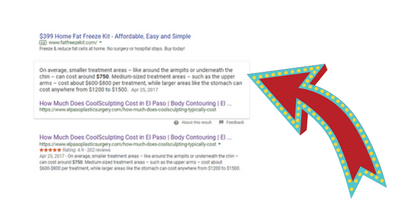
Google mentioned these highlights of Hummingbird in their blog:
- Improvements to the Knowledge Graph: the Knowledge Graph refers to the way certain search results are displayed. For example, when searching for a specific category of historical figures you’ll now see a scrolling bar that allows you to easily sort through results. There are also now comparison charts that highlight differences between objects or beings.
- Better search layout on mobile devices: Google has cleaned up the search results on mobile devices, with better touch and scrolling capabilities. One thing researchers have noticed is that a higher percentage of mobile searches are conversation, such as “where can I find Chinese takeout?” Makes sense, you’re on the go and you need to pick up dinner. Well, the search results have improved to better address questions. However, Google took it a step further with this conversion…
- Conversational improvements between Google accounts: With the new Google app you can set reminders. For example, if you say “Google, remind me to pick up toilet paper at Costco.” Google will then note the reminder and, assuming your location tracking is enabled, you’ll receive that reminder when you walk into Costco. Pretty cool.
Google’s goal is to improve the user experience, but as Search Engine Land points out, with Hummingbird they may have altered the way we look at link building. To be fair, the Penguin updates focused on weeding out websites with low quality links. While Hummingbird isn’t targeting negative link building, it seems to be reinforcing what we already know: quality, unique content is king.
Instead of thinking about how you can adjust your link building and SEO strategy in the wake of Hummingbird you should continue to focus on the value to the end user. This includes:
- quality content (address a problem/concern or educate people about a topic)
- go long-tail with your SEO (cast a wider net with the keywords you’re targeting, and optimize with terms like “how long” or “what’s the difference between”)
- contributing to relevant online communities (be active on Real Self and other forums that fit your niche)
- encourage comments and the sharing of your content
- establish your Google Authorship (and build circles within Google+)
- build more quality video (sure patient testimonials videos are awesome, but short clips about a given topic are very valuable, as can a live ‘q & a’ stream)
Hummingbird, like any algorithm update or overhaul, shouldn’t be a signal to adjust your marketing strategy. Instead, re-focus your efforts on an area where you’re lacking. Maybe you’ve neglected Google+. Spend an 30 minutes a week adding influencers to your circles and commenting on posts. Or perhaps you’ve posted a lot of great blog articles, but you don’t have much video. Note the top 10 best patient concerns and spend 30 minutes a week addressing them in a video format.
If you have any questions about Hummingbird, or SEO or link building in general, feel free to drop TRBO a line here. You can also reach us directly at 877-673-7096 x2.







